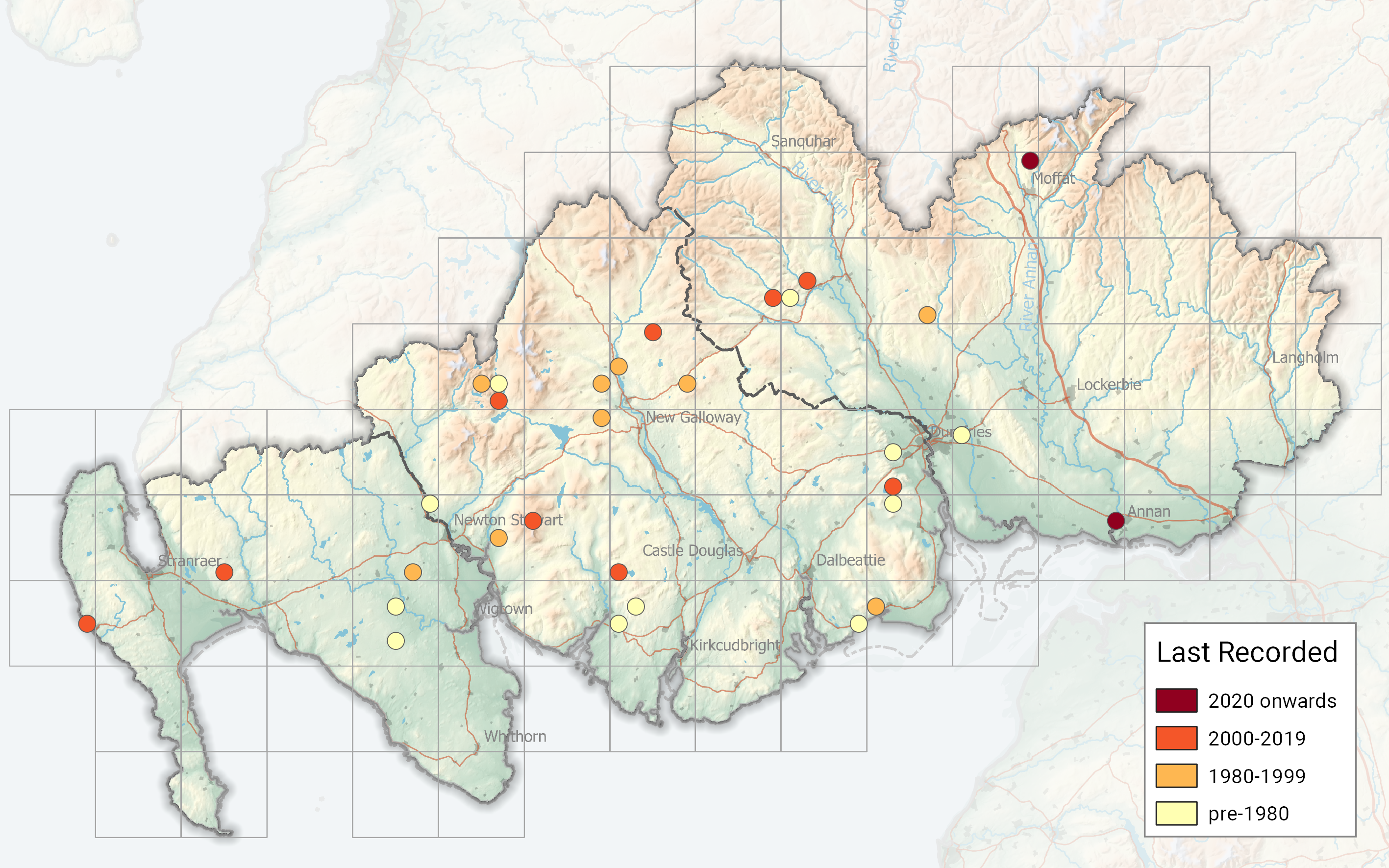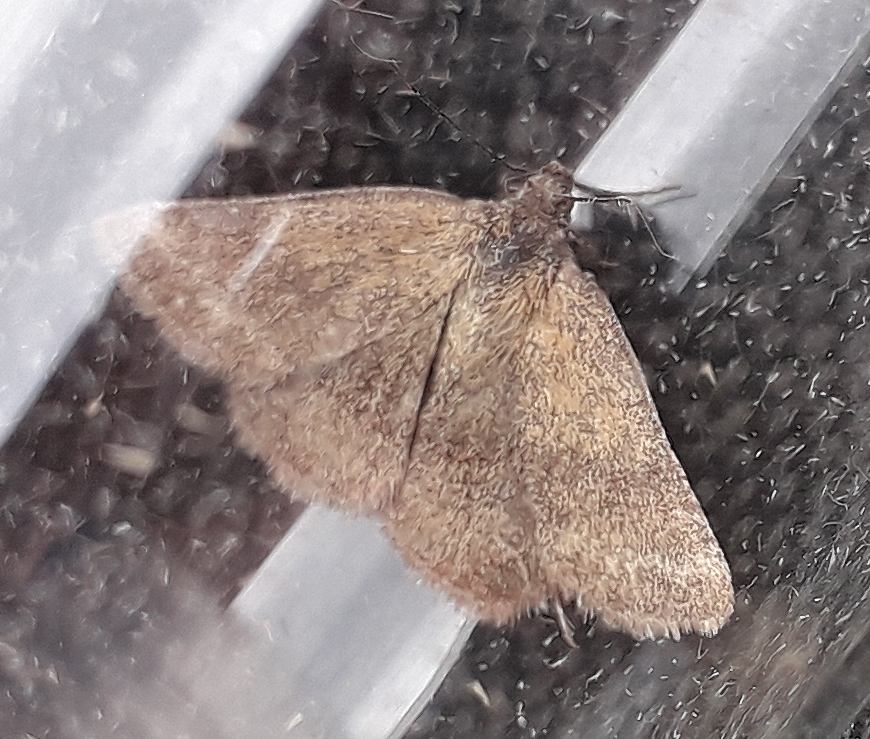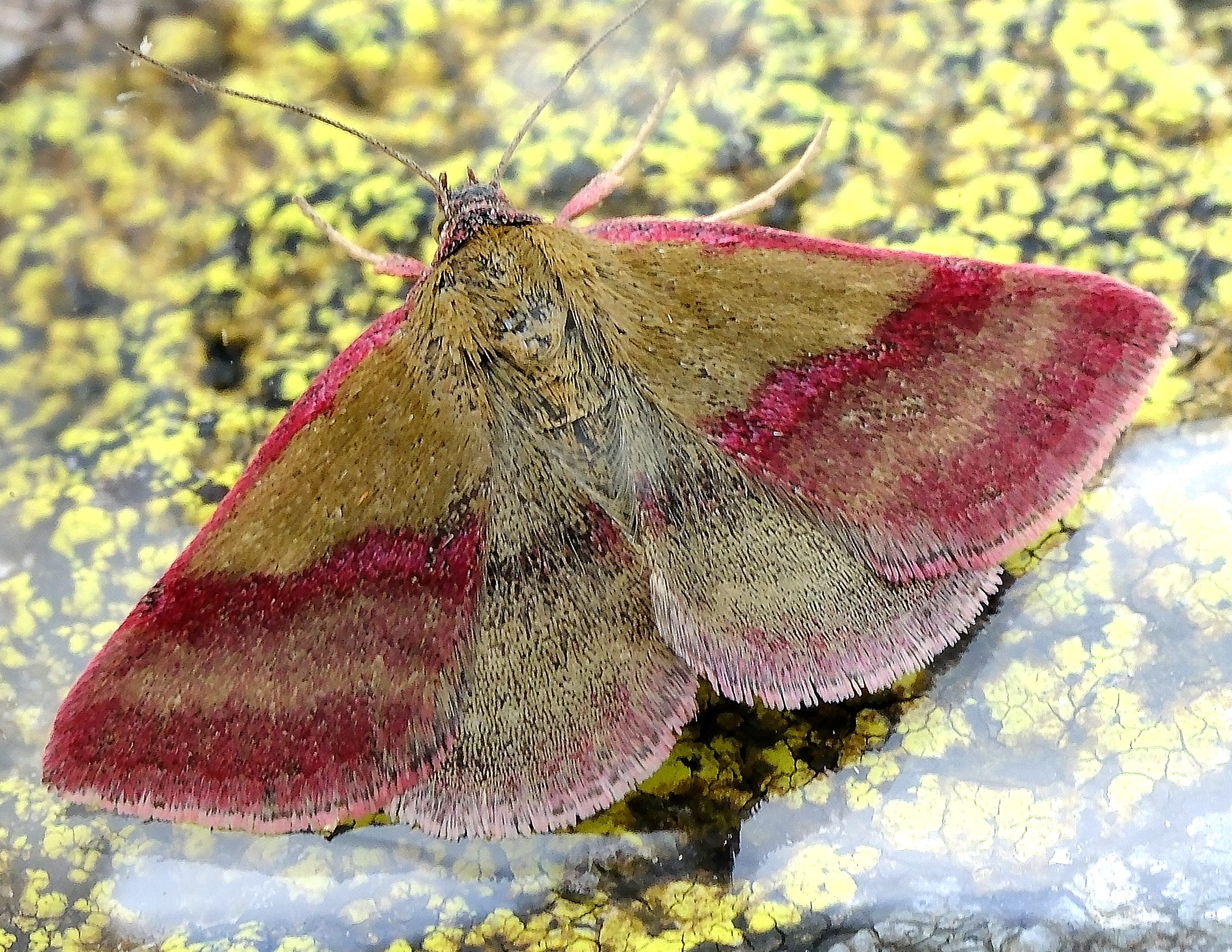Identification
Fairly distinctive, but with two forms, where the wings are dull olive-brown. Form aenea (Hb.) has magenta cross-bands, whereas f. fusca Tutt has dark brown cross-bands. Please record the form seen.
Life cycle
One generation. Waring et al. (2009) state the flight period from late May, but Thompson and Nelson (2006) gave 5th May as their earliest date for Northern Ireland, which is adjacent to Galloway, and concurs with our findings. Overwinters as a pupa, in a cocoon that is formed among plant debris. Larvae are present from late June to early September.
Larval foodplants
Larvae feed on Common Milkwort and Heath Milkwort.
Habitat
Heathland, moorland, wwodland rides, coastal sand-dunes and calcareous grasslands.
History 1860-2010
Lennon (1863) had stated that it was not common, but that it had occurred at Glen Mills (VC72). Gordon (1913) had stated it was common and generally distributed on moors, rough pastures and grassy slopes by the sea in Wigtownshire. Earliest date was 1st May 1901.
Archibald Russell (1944) listed it as occurring near Gatehouse of Fleet (VC73) during the years 1942-43. Sir Arthur Duncan found it on 24th May 1944 at Tynron and Lochar in 1976 (both VC72) with further records from Troston and Portling in the mid-1970s, all specimens at National Museums Scotland.
In 1976 it appeared on only one occasion at both Penninghame and Gatehouse of Fleet Rothamsted stations and that was all the records trapped by this method.
From 1971 to 2010 there were four records for Dumfriesshire of which three were in Scaur Glen and one on Glenmaid Moor. Wigtownshire had one record to report, and that came from Port Kale in 2003. The other fourteen records were all in Kirkcudbrightshire, from Mabie Forest, Cairnsmore of Fleet NNR, Hannaston Wood and the Silver Flowe NNR, being some of the typical sites it was found on.








